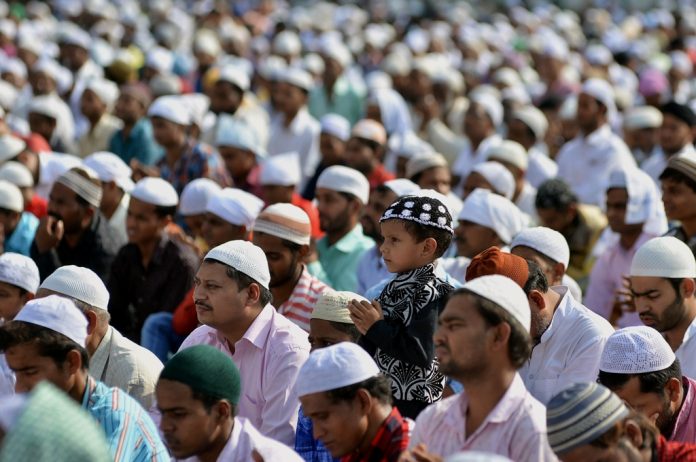
By Iqbal Salahkar
Protests against National Population Register (NPR), National Register of Citizens (NRC) and Citizenship Amendment Act (CAA) dominated India’s political discourse in the past three months. Now as the mass movement appears subsiding, one can identify at least three streams among protesting Muslims.
The first stream stuck to the Indian Constitution and what they called the ‘Idea of India’. To them, CAA was an attack on the secular fabric of the country and it was secularism which they were defending.
The second stream stood for some sort of Muslim Identity Politics. This group vocally asserted that it was primarily the Muslim identity and not secularism which was under attack. Besides the ruling dispensation, they recounted the anti-Muslim biases of even the earlier regimes and demanded not just a repeal of CAA but also an equitable representation of Muslims in public life.
The third stream which stood out distinctly was ‘religious’ in nature. They saw the widespread anti-Muslim hatred in India fuelled by the emerging global Islamophobic sentiments. The problematic part in this discourse propagated by the ‘religious’ stream is that they believe that the persecution of Muslims is because of their abstract faith in Islam. To give a simplistic reason of Muslims being targeted because of their abstract faith is simply refusing to explore the real factors behind this widespread persecution. This approach to believing Islamic faith as the cause of persecution also ignores the persecution of numerous other groups.
A classic example of religion being the portrayed cause of persecution was that of Catholic Christians in United States of America where xenophobia also played an important role. According to a 2016 poll by Gallop, Protestant Christians comprise 48.9% of the population of USA and Catholic Christians 23%. In the early 1800s, there were only 30,000 Catholics in a population of 4 million. However, their numbers had increased to 75,000 by 1810 and to 1 million in 1840. The steep rise was due to the rapid influx of Catholics from Europe, especially Ireland and Germany. This increase in Catholic population did not go well with many Protestants who were not welcome of outsiders in their lands. Historian John Wolffe in his Comparative Historical Categorisation of Anti‐Catholicism published in Journal of Religious History has identified the reasons for such persecution as ‘constitutional-national’ and ‘socio cultural’ other than the differences in ‘popular culture’ and ‘theology.’
In 1835, Samuel Morse, in his Foreign Conspiracy Against the Liberties of the United States established that the mass influx of immigrants was a well-planned Catholic conspiracy. Morse’s book, along with other literature such as Lyman Beecher’s Plea For the West solidified the anti-Catholic sentiments already growing in USA. The Press had started spitting anti-Catholic venom. Weeklies targeting the Catholics like The Protestant and Native American were already functioning since 1830s. By 1850s even mainstream newspapers such as Texas State Times started contributing in the anti-Catholic propaganda. The propaganda subsequently translated into violence when on August 6, 1855, Protestant mobs attacked Catholic neighbourhoods in the city of Louisville in what came to be known as Bloody Monday. 22 Catholics were killed and numerous others injured. Neither was anyone convicted for the riots, nor were the victims compensated.
Anti Catholic sentiments steeply rose among the people and by the 1880s, it developed into a full-fledged movement. In 1887, American Protective Association (APA) was created whose aims included restricting Catholic immigration, removing Catholic teachers from public schools and banning Catholics from public offices. The attack on Catholics was not merely limited to the political domain. Mark Twain’s 1889 novel A Connecticut Yankee in King Arthur’s Court too expressed anti-Catholic sentiments. Closer in time, anti-Communism offers another vivid example of persecution. From the late 1940s till the collapse of Soviet Union in 1991, it appeared that the threat of ‘Red Danger’ loomed over the world like Mushroom clouds. Mass media, literature and cinema were used to portray Communism as a monster. Persecution of Communists followed as a natural consequence.
In the infamous Bodo League Massacre of 1950 during the Korean War, around 1,00,000 ‘suspected Communists’ were executed. In 1965-66, members of the Communist Party of Indonesia and alleged Leftists were brutally massacred. The US-backed Guatemalan military government killed around 35,000 Maya civilians because they were viewed as Communist sympathisers. The methods included massacres, forced disappearances and summary executions. Closer home, the persecution of Adivasis and Dalits are two examples.
Hence, the mere fact that these groups were targeted despite not having faith in Islam should prepare Muslims to identify persecution at various levels – starting from literature, cinema and press. Driving religion into this social isolation at this moment in India would only block their minds from scientifically understanding its causes and effects.
Several political thinkers such as Francis Fukuyama have scientifically examined the rise of Populist Nationalism in the past one decade which has initiated or accelerated the persecution of various groups throughout the world. In the Indian context, there are more pressing questions. Are anti-Muslim policies being officially and unofficially implemented because of some inherent hatred against Muslims? Or did economic reasons make it necessary for politics to look out for enemies, and they found that enemy in Muslims? If it was so, what are the internal and external factors which made Muslims as vulnerable victims? Was it their low representation in government services, judiciary, and various other public domains? Will the ‘extermination’ or ‘homogenization’ of Muslims complete this Hindutva project? Or there will be other more victims to come? More enemies to be created?
The above examples and questions cloud my mind leading me to feel that to blame an abstract faith like Islam for persecution is not just fallacious but overlooks some important questions. To problematize these questions, instead, will go a long way in helping Muslims devise a proper strategy to resist and overcome persecution of not just Muslims, but also other minorities in India.
Iqbal Salahlar is an undergraduate student at Aligarh Muslim University

